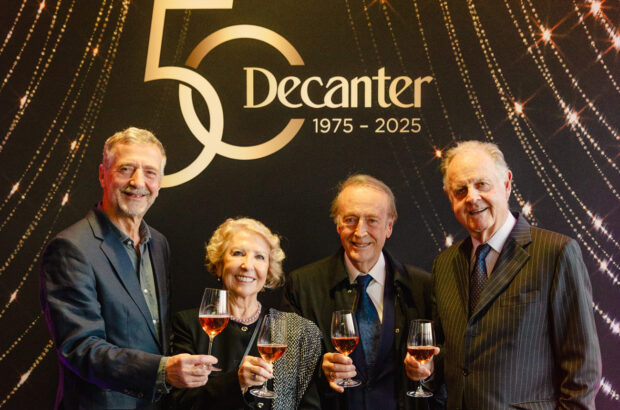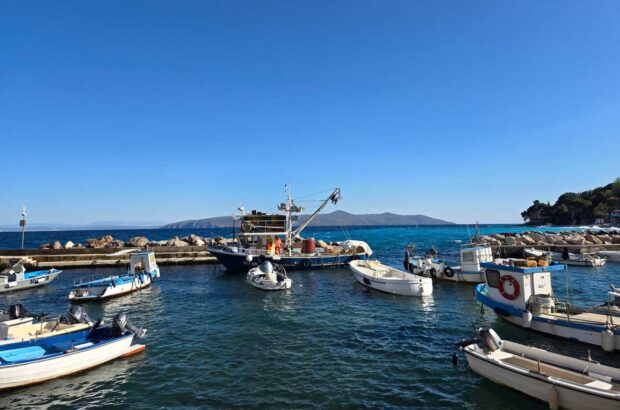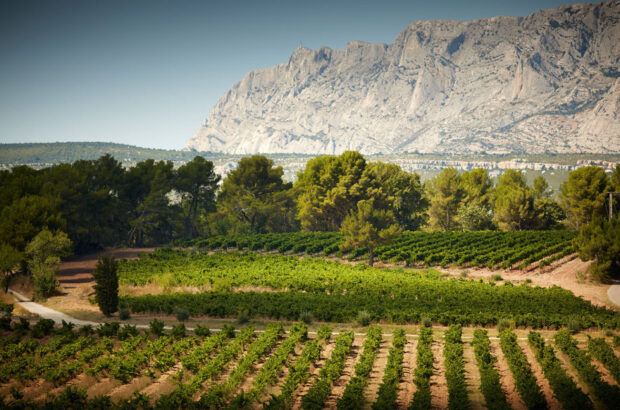Jane Anson reports on a fresh discovery of a Barolo monopole vineyard that has been certified by the local Consorzio...
Anson on Thursday:
It’s a bit like buying a house and discovering a Titian hidden in the floorboards. When Silvano Boroli decided to break from his family’s De Agostini publishing company back in 1997, he bought the small Cascina Bompe estate in Alba, near to the Barolo heartlands.
He turned the farmhouse that came along with the 12 hectares of vines into a hotel and restaurant, Locanda del Pilone, that now has its first Michelin star. It also lists 95% of all Barolo producers, ‘because it made sense to make it a place that all the best names would want to come, where they could drink their own wines with clients’.
Just six months after his arrival, Boroli, a former senator as well as newspaper owner, managed to acquire an old farm in Castiglione Falletto, an area that is notoriously difficult for outsiders to get a piece of.
With a foothold in both Barolo and Alba, the Boroli family might have been forgiven for feeling pretty content. But in 2007, when son Achille Boroli had taken over running the property, American journalist and writer Alan Tardi brought up something that he had discovered during research for his book Romancing the Vine.
‘I’m pretty sure that you have a monopole vineyard within your land,’ Tardi said over dinner one night.
Achille shook his head. ‘We have the official maps from the Consorzio di tutela Barolo. There is no single MGA (Menzioni Geografiche Aggiuntive, the equivalent of a named climat in Burgundy) entirely within the boundaries of our farm.’
Barolo monopole – the proof
Tardi assured him that he had found one from an old map, and suggested that he go back into the local archives and libraries to find proof.
Maps, funnily enough, were part of Achille’s heritage. De Agostini publishing company was founded in 1904 by a geographer, and was known for its maps and encyclopedias even before being bought by Archille’s great grandfather in 1919. But none of them had ever meant as much to him as the one that he discovered two years after the conversation with Tardi; a map from the 1960s demonstrating that one of the oldest named vineyards in the commune of Castiglione Falletto was located entirely within their Cascina La Brunella farm.
Armed with this proof, the Consorzio agreed to add a new MGA to the Barolo vineyard map in their next revision, due in 2012.
‘I wasn’t sure until I saw it in black and white,’ Achille says today. ‘But there it was, MGA Brunella Monopole. In theory we could have bottled from the 2012 vintage, but we didn’t want to jump the gun until we had actually seen the new map with our own eyes. So the first bottles will be from the 2013 vintage, on the market in 2017 after five years of ageing.’
The monopole – a Cru de 3° livello – is 5.01 hectares in total, with 63% Nebbiolo, 10% Dolcetto and the rest Langhe rosso.
The Boroli family already makes wine from two other MGAs, Cerequio and Villero, but they are shared with other growers. The fact that Brunella is a monopole gives it a particular cachet, as there are so few in Barolo.
Giacomo Conterno has the monopole of Cascina Francia, Fratelli Cavallotto has Bricco Boschis, Fontanafredda has Fontanafredda, Bruno Giacosa has Falletto and Ceretto has Bricco Rocche. We could also add Guiseppe Mascarello, who makes wine from the near-entirety of Monprivato.
What happened next
‘Being recognised was simply the first step,’ says Achille. ‘Before this we bottled all the vines from around the farm as our basic Barolo. We now began to separate out the monopole, and start working it differently – more crop thinning, greater selection, more plot by plot work, and in the cellar more small tanks, plus a mix of large oak casks and small barrels’.
What it will mean for the final price is not yet decided, but it is likely to be sold for more than Villero, the current top of the Boroli range that sits at around £45, although Achille points out, ‘there is no historical background to decide the best price. Even when this vineyard was identified on old maps, we don’t believe that it was ever bottled separately’.
Although Brunella Monopole is still two years away from being on the market, we got to taste the 2013 and 2014 vintages at the property.
The results clearly showed the quality of the monopole, but it was striking the gap that it left behind in the 2013 vintage of Boroli Barolo – a hollow in the mid-palate that felt glaringly obvious compared to the 2012. The Brunella cru has a layer of sand below the clay at around 50cm depth, and it contributes to a beautiful perfume, a florality and austerity beyond the grip and power – the roses of nebbiolo on full display.
The 2014 vintage, even though not easy in Piedmont, is an even more intense version of the 2013, with the perfume a marker again. But, I missed it in the entry-level Barolo, which in 2012 had been beautiful.
Achille was quick to point out that the stumble was temporary, and not surprising after losing five hectares of vines to the monopole. ‘By 2014 we had one year’s experience, so knew better how to work the remaining vines for our basic Barolo. This year we also bought an extra four hectares to further improve quality’.
‘But it was worth the learning curve,’ he continues. ‘We invested in Piedmont as wine lovers not experts, and I have spent every day in the vineyard and cellars, learning. I reduced new oak around four years ago across the range, returned to a more traditional style of elegant, precise, terroir-driven Barolo, but it takes time for changes to be recognised. I am fully aware of what an opportunity we now have for Boroli wines to see a wider impact’.
It’s hard to disagree. When it comes to boosts, discovering a monopole in your backyard just might count as a rocket.
More Anson on Thursday columns:







